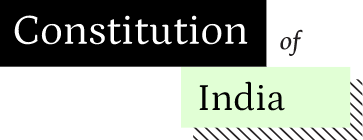M.N. Roy was the first to articulate the demand for a Constituent Assembly for India in 1934. A year later, the Indian National Congress formally adopted this as its own goal in a resolution that rejected the British Government’s constitutional reform proposal—the so-called “White Paper”—which would eventually culminate in the Government of India Act, 1935. The Congress resolution declared that “the only satisfactory alternative to the White Paper is a constitution drawn by a Constituent Assembly elected on the basis of adult suffrage or as near it as possible.” In the years that followed, the call for a Constituent Assembly became a recurring feature of Congress resolutions and a consistent theme in speeches by its leading figures.
While the Congress remained firmly committed to the principle of a Constituent Assembly, it was less certain about how this demand might advance the twin challenges of securing British consent to independence and resolving the Hindu–Muslim question. Jawaharlal Nehru asked Gandhi to examine the implications of forming such an Assembly. Writing in 1939 in his article “The Only Way” in Harijan, Gandhi admitted that he had initially doubted the idea when Nehru first placed it before the Congress. However, he later confessed that “hard facts have made me a convert and, for that reason perhaps, more enthusiastic than Jawaharlal himself. For I seem to see in it [Constituent Assembly] a remedy, which Jawaharlal may not, for our communal and other distempers, besides being a vehicle for mass political and other education.”
For Gandhi, a Constituent Assembly was not merely an institutional mechanism to draft a constitution “indigenous to the country and truly and fully representing the will of the people.” He saw in it a potential solution to India’s “communal problem,” since all communities could be represented in fair proportion within the Assembly. Describing it as the “only way out,” Gandhi urged leaders to direct the freedom movement toward achieving a Constituent Assembly: “All resources must, therefore, be exhausted to reach the Constituent Assembly before direct action is sought. A stage may be reached when direct action may become the necessary prelude to the Constituent Assembly.”
Eight years later, in 1946, the British government announced the Cabinet Mission Plan, which proposed setting up a Constituent Assembly for India. The Plan, however, stirred controversy—particularly over its provisions for electing members on a restricted franchise and its proposal to group provinces by religion in a federal structure. Despite its serious misgivings, the Congress Working Committee (CWC) resolved to participate in the Assembly, subject to ratification by the All India Congress Committee (AICC).
In June 1946, Gandhi travelled to Bombay to attend a decisive AICC meeting on whether the Congress should join the Assembly. Many delegates favoured rejecting the Cabinet Mission Plan outright. Gandhi urged them otherwise, remarking that “the proposed Constituent Assembly is not the parliament of the people. It has many defects…it is for you to get them removed. It should be a challenge for combat, and not a ground for rejection.” He appealed to the AICC to endorse the CWC’s resolution and pave the way for Congress participation. Anticipating calls for renewed satyagraha, Gandhi cautioned that “this is no occasion for a fast or civil disobedience. I regard the Constituent Assembly as the substitute of satyagraha. It is constructive satyagraha.” On July 7, 1946, the AICC ratified the resolution, confirming its participation in the constitution-making process.
Gandhi’s interventions—in 1939 and again in 1946—were critical in transforming the idea of a Constituent Assembly into political reality. On 9 December 1946, the Assembly convened for the first time. Over the next two years and eleven months, it deliberated, debated, and ultimately produced a Constitution for India.
